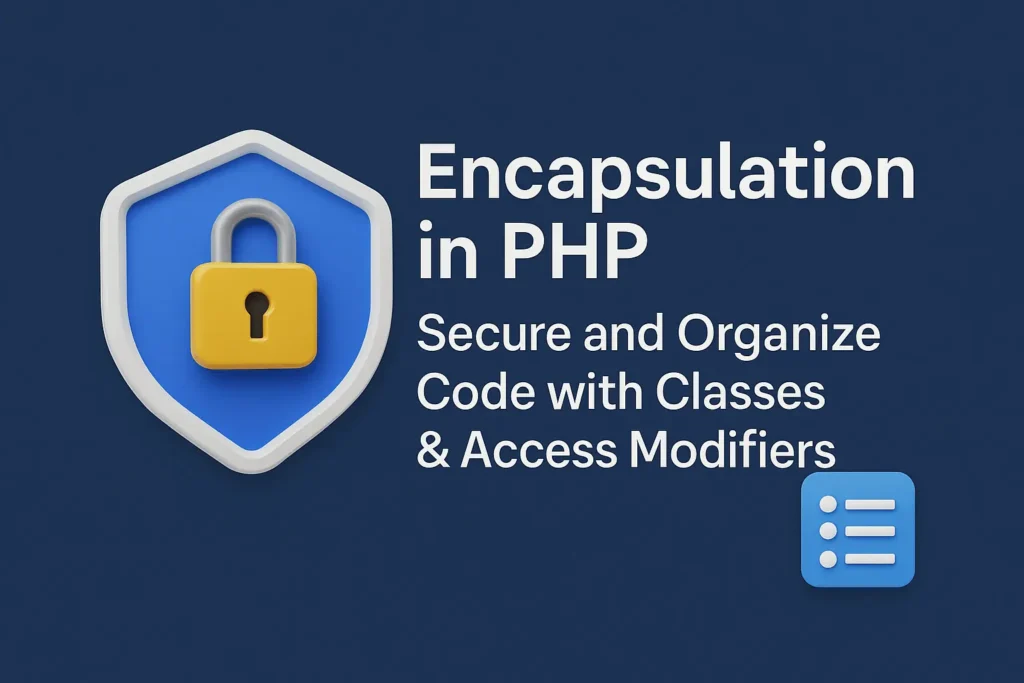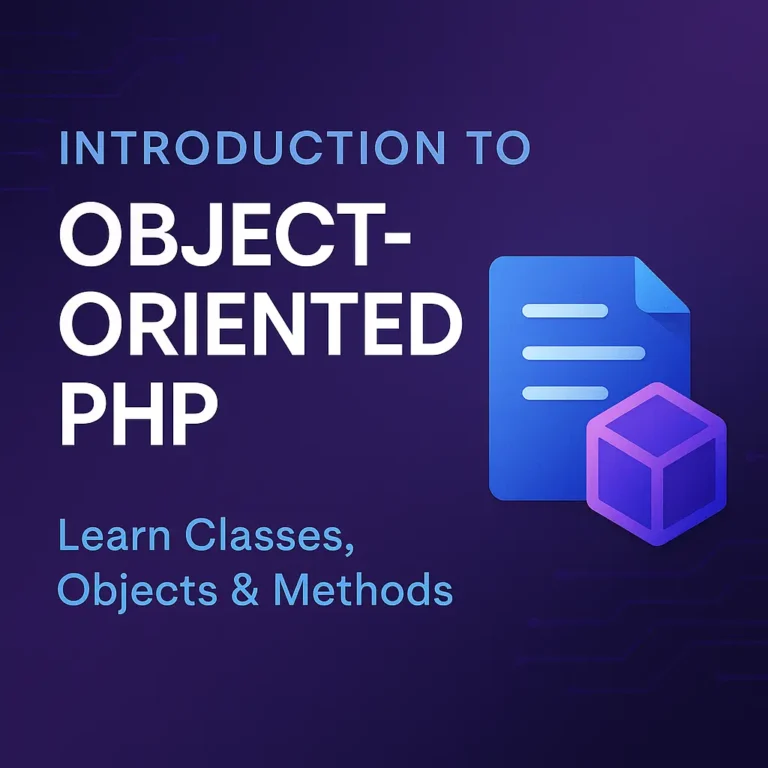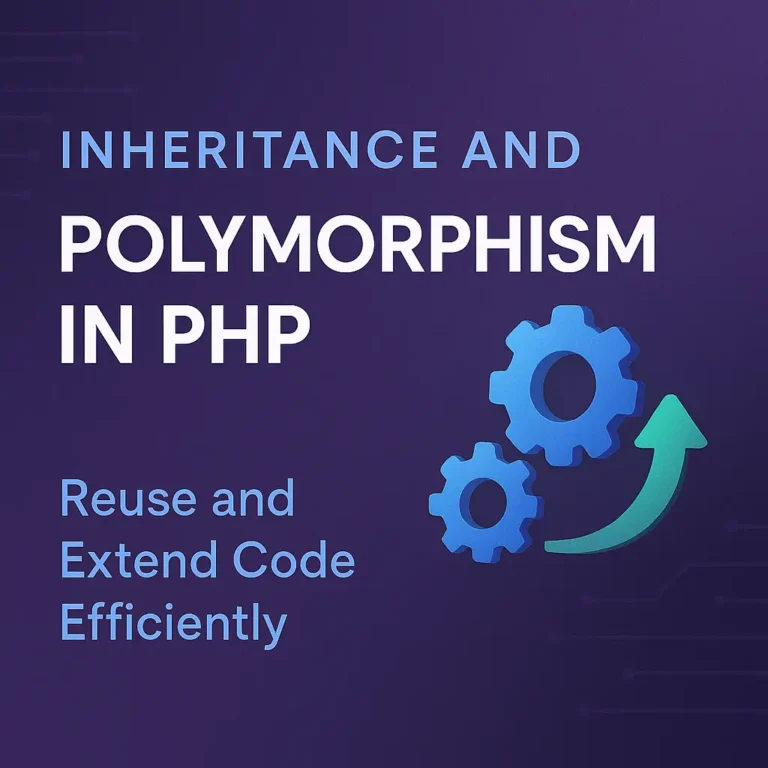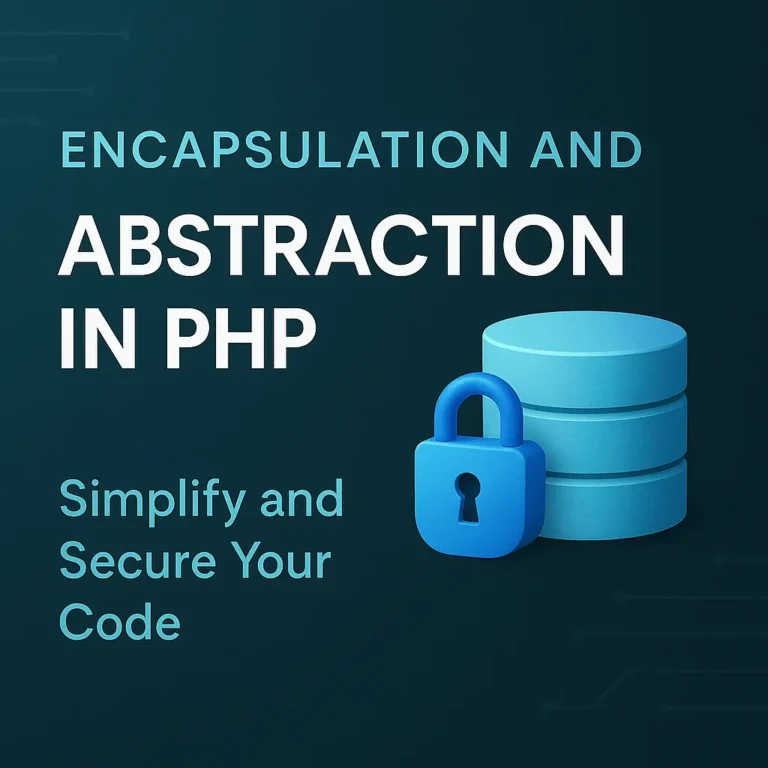Encapsulation also restricts direct access to some of an object’s components, which can prevent the accidental modification of data and promotes the integrity of the object’s state. This article will explore the principles of encapsulation in PHP, including the use of access modifiers (public, private, protected), and provide practical code examples to illustrate these concepts.
Principles of Encapsulation
Encapsulation in OOP is the practice of keeping an object’s state private and only allowing access to it through public methods. This principle ensures that an object manages its own state and only exposes behavior that is safe and intended for external use. The primary goals of encapsulation are:
Data Hiding: Protecting an object’s internal state from unintended or harmful changes.
Controlled Access: Providing a controlled way of accessing and modifying the object’s state.
Modularity: Encapsulation helps in organizing code into distinct, modular units which makes the codebase easier to manage and understand.
Encapsulation is implemented using classes, where the internal data and methods are hidden from outside interference and misuse. This is achieved using access modifiers.
Access Modifiers in PHP
PHP provides three access modifiers to control the visibility of properties and methods within a class:
Public: The public access modifier allows properties and methods to be accessed from anywhere, both within and outside the class.
Private: The private access modifier restricts access to properties and methods to within the class itself. They cannot be accessed or modified outside the class.
Protected: The protected access modifier allows access to properties and methods within the class and by classes derived from that class (child classes).
Public Access Modifier
The public access modifier is the most permissive. It allows class members to be accessed from anywhere.
Example: Public Access Modifier
class Person {
public $name;
public $age;
public function __construct($name, $age) {
$this->name = $name;
$this->age = $age;
}
public function displayInfo() {
echo "Name: " . $this->name . ", Age: " . $this->age . "\n";
}
}
// Client code
$person = new Person("John Doe", 30);
echo $person->name; // Directly accessing public property
$person->displayInfo(); // Accessing public method
In the example above, the name and age properties are public, so they can be accessed directly from outside the Person class.
Private Access Modifier
The private access modifier restricts the visibility of properties and methods to within the class itself. This means they cannot be accessed from outside the class, ensuring better control over the data.
Example: Private Access Modifier
class Person {
private $name;
private $age;
public function __construct($name, $age) {
$this->name = $name;
$this->age = $age;
}
public function displayInfo() {
echo "Name: " . $this->name . ", Age: " . $this->age . "\n";
}
public function setName($name) {
$this->name = $name;
}
public function getName() {
return $this->name;
}
}
// Client code
$person = new Person("John Doe", 30);
// echo $person->name; // Error: Cannot access private property
$person->displayInfo(); // Accessing public method
$person->setName("Jane Doe");
echo $person->getName(); // Accessing private property via public method
In this example, the name and age properties are private, so they cannot be accessed directly from outside the Person class. Instead, public methods setName and getName are used to modify and access the private name property.
Protected Access Modifier
The protected access modifier allows properties and methods to be accessed within the class itself and by classes derived from it. This is useful for creating a clear hierarchy and sharing functionality between a parent class and its subclasses.
Example: Protected Access Modifier
class Person {
protected $name;
protected $age;
public function __construct($name, $age) {
$this->name = $name;
$this->age = $age;
}
protected function displayInfo() {
echo "Name: " . $this->name . ", Age: " . $this->age . "\n";
}
}
class Employee extends Person {
private $position;
public function __construct($name, $age, $position) {
parent::__construct($name, $age);
$this->position = $position;
}
public function showEmployeeInfo() {
$this->displayInfo();
echo "Position: " . $this->position . "\n";
}
}
// Client code
$employee = new Employee("John Doe", 30, "Software Engineer");
// echo $employee->name; // Error: Cannot access protected property
$employee->showEmployeeInfo(); // Accessing protected method via public method in subclass
In this example, the name and age properties and the displayInfo method are protected in the Person class. They can be accessed by the Employee subclass but not from outside these classes.
Combining Access Modifiers for Effective Encapsulation
Effective use of access modifiers is crucial for achieving proper encapsulation. By combining public, private, and protected members, you can ensure that your classes are both flexible and secure.
Example: Combining Access Modifiers
class BankAccount {
private $balance;
protected $accountNumber;
public $accountHolder;
public function __construct($accountHolder, $accountNumber, $initialBalance) {
$this->accountHolder = $accountHolder;
$this->accountNumber = $accountNumber;
$this->balance = $initialBalance;
}
public function deposit($amount) {
if ($amount > 0) {
$this->balance += $amount;
echo "Deposited: $amount, New Balance: " . $this->getBalance() . "\n";
}
}
public function withdraw($amount) {
if ($amount > 0 && $amount <= $this->balance) {
$this->balance -= $amount;
echo "Withdrawn: $amount, New Balance: " . $this->getBalance() . "\n";
} else {
echo "Insufficient balance\n";
}
}
private function getBalance() {
return $this->balance;
}
protected function getAccountNumber() {
return $this->accountNumber;
}
}
// Client code
$account = new BankAccount("John Doe", "1234567890", 1000);
$account->deposit(500);
$account->withdraw(200);
// echo $account->balance; // Error: Cannot access private property
// echo $account->accountNumber; // Error: Cannot access protected property
echo "Account Holder: " . $account->accountHolder . "\n";
In this example, the balance property is private, ensuring that it can only be modified through controlled methods (deposit and withdraw). The accountNumber is protected, allowing subclasses to access it while preventing direct external access. The accountHolder is public, as it’s safe to be accessed and modified directly.
Conclusion
Encapsulation is a powerful principle in OOP that helps in creating robust, maintainable, and secure code. By using access modifiers appropriately, you can control the visibility and integrity of your class properties and methods. In PHP, understanding how to leverage public, private, and protected access modifiers enables you to design classes that are well-encapsulated, promoting better code organization and adherence to the principles of data hiding and controlled access. Whether you’re working on small scripts or large-scale applications, encapsulation will play a crucial role in your development process.






